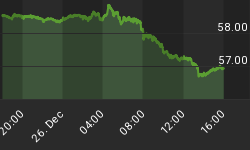Both the US dollar and bond yields head lower as stocks extend losses following a mixed US jobs report, which is ultimately supporting the disinflation theme, further alleviating expectations of a 2015 rate hike (which remains our view).
US non-farm payrolls slowed to 252K in December from an upwardly revised 353K, following a net 2-month upward revision of +50K. The unemployment rate fell to 5.6% (lowest since June 2008) from 5.7%, with the underemployment rate also hitting a fresh seven-year low at 11.2%. The labour participation slipped back to 62.7% from 72.8%, helping to explain the ongoing fall in the jobless rate
Slow wages growth not strictly European
On the pay front, average hourly earnings contracted by 0.2% m/m, translating into a 1.7% rise y/y -- the lowest since Oct 2012. The decline in pay was spread across most industries, highlighting the deflation story on the wages front may not be strictly a European phenomenon.
As deflationary broaden further, we ought to get used to the idea of falling price of capital (interest rates & yields) and falling price of labour (slowing wages). Falling price of land (rents and home prices) may soon follow.
Report underscores Fed shift
Interestingly, the report comes two days after the Fed minutes highlighted the Fed's more forceful emphasis on low inflation at the December statement, indicating it will "monitor inflation developments closely", which suggests this is now the Fed's top priority. The emphasis served to offset the Fed's visible upgrade of labour market conditions.
The unexpectedly low wages figures also justify the Fed's "patient" guidance. While the majority of market observers appear to agree on June 2015 as the most likely date for a Fed move, not only we disagree with such forecast, but continue to not see a Fed hike in 2015. The reasons are described in more detail in our deflation assessment here.
You can fight the Fed, but not the bond market
The old market cliché of "don't fight the Fed" remains valid in highlighting the Fed's authority to limit violent market instability and prolonged recessions, but do not confuse it with Fed members' hints of rate hike intentions, especially at a time of rampant lack of visibility by Fed researchers with regards to the new equilibrium rate of unemployment at a time of flashing deflationary pressures. The bond market chart below reminds that the bull market in bonds (bear market in yields) has never left us, and a retest of 1.38% in 10-year yields is upon us. Any bounce above 2.45% would be reversed and the next Fed hike signal would be will promptly received by falling yields as growth concerns--not inflation--take over.
The "dollar strength" story will continue, albeit, enduring intermittent speculative blows along the course of H1 2015 as the predominantly dovish FOMC highlights incorporates slowing pay growth to its guidance. As long as equity indices believe the Fed will raise rates in an increasingly disinflationary climate, the reaction will be that of several violent rebound-capping declines to the benefit of the Japanese yen. The only way for the latter to pursue a fresh selling momentum is another April increase in Japanese QE. Until that, weak yields & resurging yen shall remain.

















